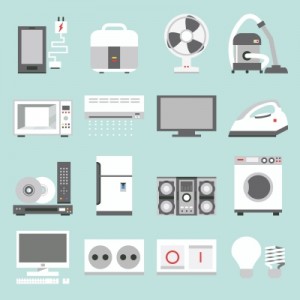Which appliances are most likely to catch fire?
June 18th, 2015
Research from the UK has revealed the appliances most likely to catch fire.
According to data gathered by consumer watchdog Which?, washing machines, tumble dryers, and dishwashers were the biggest cause of domestic blaze.
The figures obtained through a Freedom of Information request showed nearly 12,000 fires were caused by faulty home products in the UK between 2011 and March 2014.
Of those, 14% were started by washing machines, while 12% were caused by tumble dryers.
Which? executive director, Richard Lloyd, said: “It’s shocking that everyday household appliances can pose such a danger – washing machines, tumble dryers and dishwashers are often the appliances we leave on overnight or as we leave our house.
“More needs to be done to protect consumers from this risk and it’s crucial that products known to be dangerous are recalled as quickly as possible.”
The news comes after three leading brands in Australia issued warnings relating to potentially dangerous home appliances.
Samsung warned some of its top loader washing machines may be a potential fire hazard, Miele recalled two gas burner cooktops, and InSinkErator said two models of waste disposers could pose a fire risk.
A statement from Which? said: “Manufacturers are responsible for ensuring that the products we buy are safe and, where a problem is found, to take steps to address the risk.
“If an appliance is found to be dangerous, manufacturers issue a safety notice to alert owners.”
In the latest report, the UK watchdog also said it’s possible some brands are more prone to catching fire than others.
The stats showed 175 Hoover washing machines in the UK market caught fire – 12% of the total number of washing machine fires in which the brand was recorded.
The Which? report stated: “We think that Hoover’s market share is probably smaller than 12% – and that its number of washing machine fires is disproportionately high.
“Hoover said it cannot establish conclusions from the data we provided.”
Hotpoint accounted for 34% (349) of the tumble dryer fires recorded and 38% (410) of dishwasher fires, in incidents where the brand was recorded.
“While it’s possible that Hotpoint accounts for as much as a third of the (UK) tumble dryer market, its share of the dishwasher market is likely to be less than 38%, suggesting that the number of Hotpoint dishwasher fires is higher than expected,” the statement added.
“Hotpoint told us it doesn’t agree with our market-share figures and believes it’s inaccurate to draw conclusions from a relatively small number of incidents where the cause of fire is not always investigated.”
Amongst the lowest causes of fire, according to the data, were toaster/grill (4%), electric blankets (3%) and irons (1%).
Fire & Rescue NSW said it attends approximately 2,500 kitchen fires each year – or approximately 56% of all residential fires. More than half of all home fires start in the kitchen.
The brigade recently launched the “keep looking when cooking” winter campaign on the back of nine deaths people in house fires since January.
The fire authority recommends households follow a simple checklist to ensure safety, which includes:
- Keep children away from hotplates and ovens whilst cooking and consider installing a stove guard.
- Clean your stove grill after each use and clean the range hood filter and all kitchen appliances regularly.
- Install a fire extinguisher and fire blanket in the kitchen and know how to use them. They should be situated at least 1 metre away from the stove and between the stove and the nearest exit.
- If a kitchen fire occurs and you don’t feel confident you can put it out, switch off the appliance, leave the premises and call the fire service on Triple Zero (000) from a safe place.
- Ensure that all cooking appliances are turned off after use.
- Don’t leave your cooking unattended. If you must leave the kitchen whilst cooking, turn off the hotplate.
- Don’t use water to put out fat and oil fires. Water can cause the fire to spread rapidly and cause horrific burns.
The proportion of fires caused by faulty appliances in the UK between January 2011 and March 2014, based on UK government fire data was as follows (note: the number of fires includes where the brand was unknown):
- washing machines (14%, 1723 fires)
- tumble dryers (12%, 1456 fires)
- dishwashers (11%, 1324 fires)
- cookers; (9%, 1080 fires)
- Fridge-freezer/fridge/freezer (7%, 861 fires)
- central heating (5%, 606 fires)
- microwave (4%, 427 fires)
- toaster/grill (4%, 495 fires)
- TV (3%, 372 fires)
- electric blanket (2%, 236 fires)
- washer dryers (2%, 225)
- irons (1%, 92 fires)




Leave a Reply